
Due to climate change and rising sea levels, UN Secretary-General António Guterres fears a "mass exodus of entire populations on a biblical scale". It’s a highly alarming prognosis. Is the glass half empty after all? I think not. Together, we can use technologies and sustainable innovations to pursue a radical new way of thinking. After all, to quote Albert Einstein: "In the middle of difficulty lies opportunity."
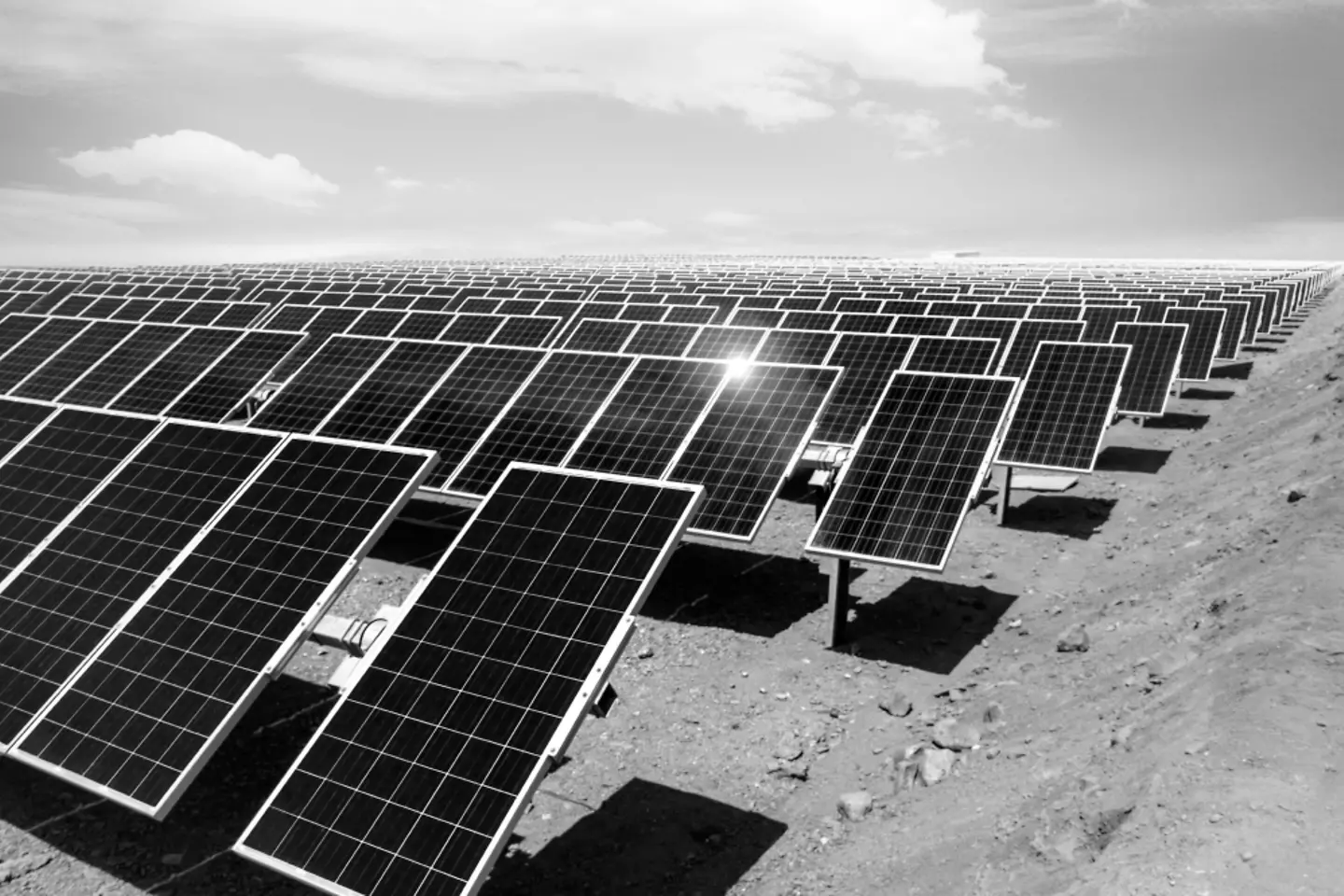
Physics Nobel laureate Klaus Hasselman highlighted carbon dioxide (CO₂) as a key driver for critical global warming in the 1980s. What has happened since then? Not enough. We are producing more CO₂ and other greenhouse gases than ever before: currently, more than 51 billion metric tons of CO₂ equivalents (CO₂e) worldwide. CO₂e – also known as global warming potential (GWP) – is a unit of measurement that enables the comparison of the relative effects of greenhouse gases on the climate. This measurement shows us, for example, that laughing gas, produced, among other things, by nitrogenous fertilizers, is approximately 300 times as damaging to the climate as carbon dioxide. And to reach the 1.5°C target and avoid the worst effects of climate change, we must reduce global greenhouse gas emissions to net zero by 2050. However, CO₂ emissions in the last two years have, unfortunately, been rising. That means that if we maintain the current course for just a few more years, Guterres' prediction will come true.
We must forge a path toward greater cooperation, rooted in solidarity. “
United Nations, Secretary-General's message to the World Government Summit
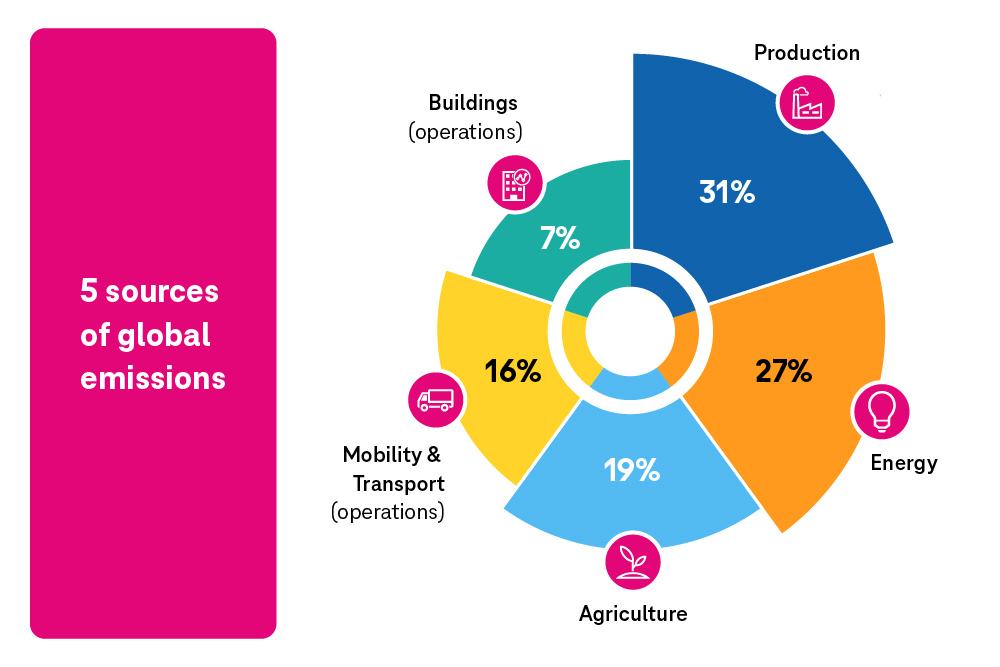
The fact is that many technologies we can use to benefit the environment already exist. Solar or wind installations, for example, or supporting technologies such as IoT sensors for buildings, which analyze room temperature and can highlight high energy consumption. We can create the solutions that we currently do not have. What we are truly missing is the right mindset. We must realign our ways of thinking and acting because our current attitude is driving us ever deeper into a climate and biodiversity crisis. This crisis affects both business and lifestyle; the exploitation and waste of resources are still too high in these areas. This also goes for politics, an arena that is still too risk-averse to change. We must rethink everything to create a future with a better quality of life – this is a question of systemic change. This is a challenge, not least for industries and businesses. But it is possible.
The key word here is disruption: profound changes that should lead to a positive outcome. Let's look at the five areas which Breakthrough Energy reports as being responsible for most global emissions and in which disruptive measures are particularly urgent:
An estimated 85 percent of all CO₂ emissions can be categorized as scope 3. You can read more about this in my blog Why Does Progress Require Co-Creation. The solutions that help us to reduce greenhouse gas emissions and become more environmentally accountable are often known to us. Digital technologies are consistently playing a role here. With the proper application and management, they can contribute to more sustainability and save resources in key economic sectors – which are currently also responsible for most greenhouse gas emissions in the EU:
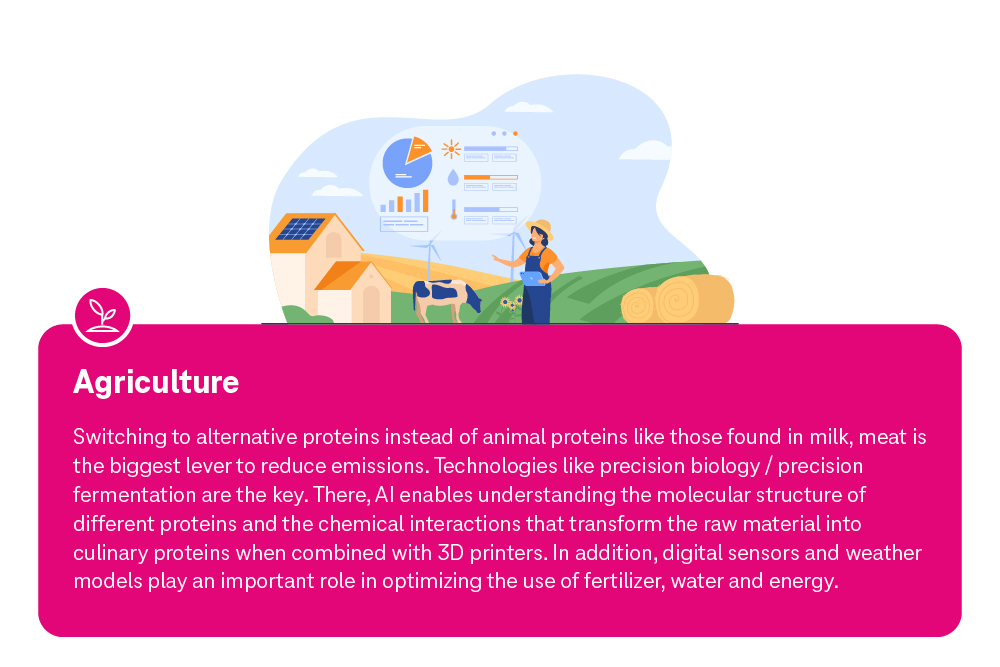
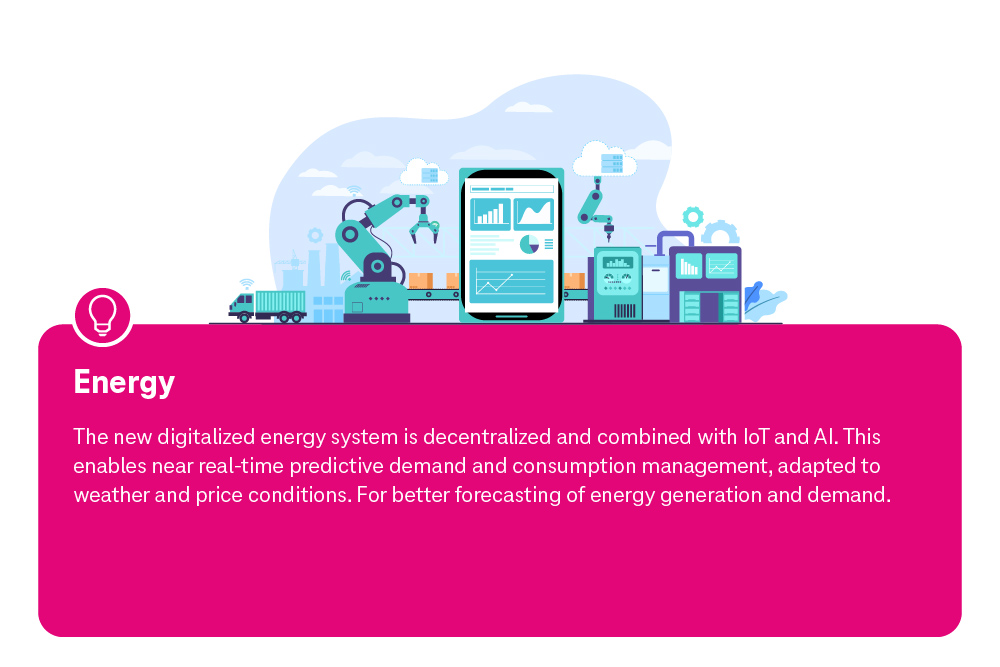
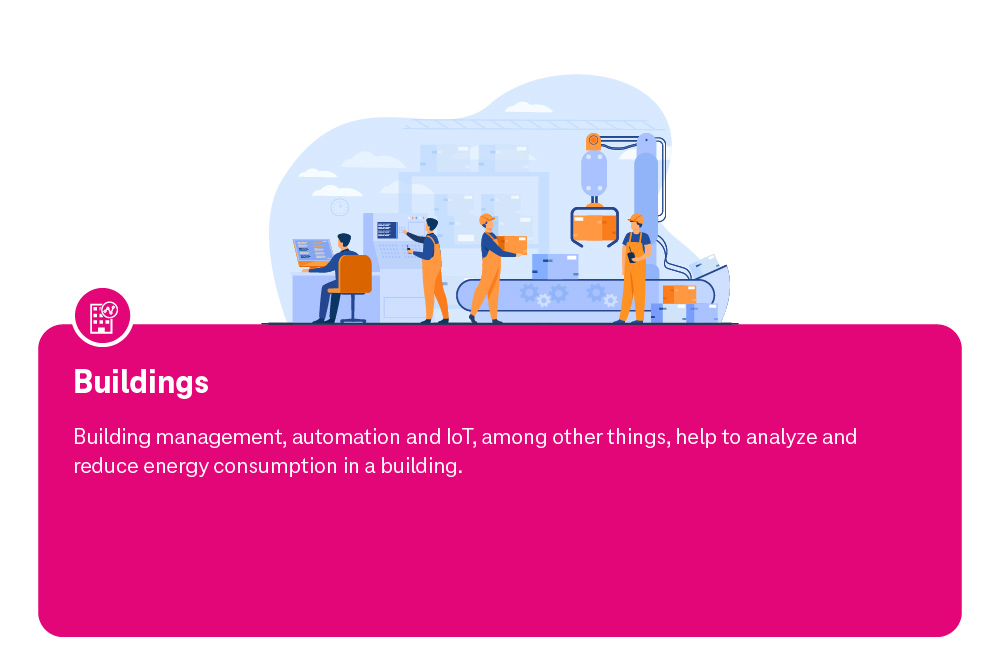
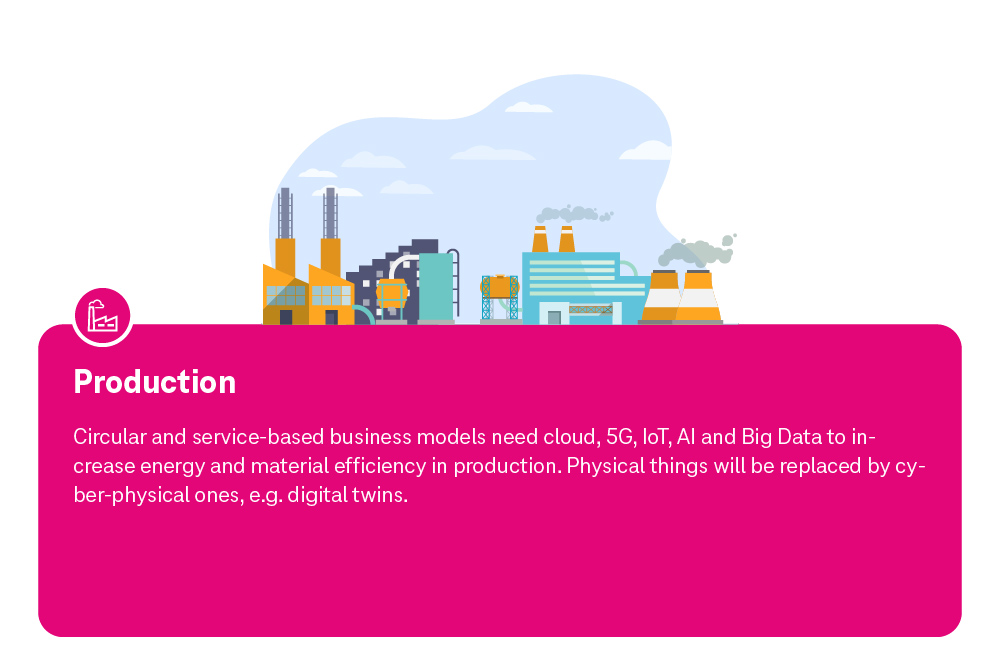
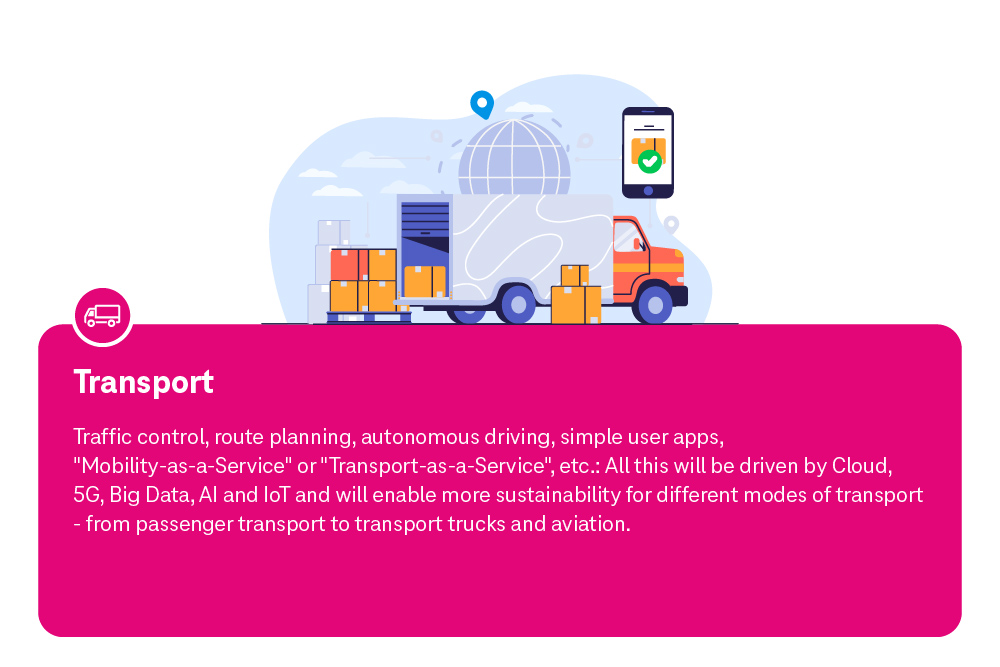





Let us consider industrial production, for example. Naturally, the intensity of greenhouse gas emissions varies by sector and product. However, this area is among the most emission-intensive, particularly steel and cement production, generating high emissions by process heat and chemicals. 70% of global industrial CO2 emissions are from steel, cement, chemicals, pulp, and paper production. Where could we begin to improve things here? A first step would be green electrification, i.e., using electricity from sustainable sources. Emissions generated during chemical processes must be removed from the air and stored elsewhere. But it is not only manufacturing that causes greenhouse gases. The World Economic Forum found that supply chains produce eleven times more emissions than production processes. So, fundamentally rethinking the flow of materials in the context of a circular economy is equally important.
But haven't we known about such measures for a long time? Where is this disruptive moment that I was talking about? The circular economy goes far beyond recycling and entails the regenerative use of products, components, and materials. Germany's Plattform Industrie 4.0 sums it up aptly: in a traditional product-led business, the goal is to sell as many products as possible. This goal leads to overproduction and lower use rates: only 4 percent of car seat spaces, 9 percent of train seats, and 34 percent of machine tool capacity are used. This overproduction is why the circular economy necessitates transforming business models towards services. Service-based approaches were hailed as an example of the opportunities presented by digitalization. They have since become a matter of survival, which must be implemented here and now. Circular and service-based business models are often only commercially viable through digitalization.
What comes after the circular economy? Sufficiency is vital to ensuring that the sustainability initiatives implemented by businesses enjoy lasting success. A sufficiency mindset scrutinizes the consumption-oriented society and establishes a new ethos: to make do with less and consume more consciously.
We all experienced this mindset in winter, for example, consciously turning on the heating less often. Replacing all climate problems with environmentally-friendly alternatives is not feasible – this would simply shift the source of our problems. When produced billions of times, a cell phone manufactured in an environmentally-friendly way is still a problem. Sufficiency will be the next genuinely significant task for companies and society. Ultimately, we must do more than use greener solutions; we must make do with fewer resources than before.
Digital technologies form the basis of such plans. AI, for example, turns power networks into smart grids: these can even out the fluctuations associated with using sustainable energy sources, such as solar and wind. After all, the sun doesn't shine 24 hours a day, and even in the vicinity of wind turbines, there is usually a lull now and then. Realizing circular business models requires various approaches, not least cloud solutions, where data on returned products or products in circulation can be collected and evaluated. Similarly, using a digital twin of the earth based on satellite data provided by Copernicus will become more important for monitoring the risks of business activities (production and products) associated with climate change. The boundaries between the areas mentioned above are certainly not fixed – energy and mobility also play a role in industrial production. The digital twin initiative illustrates that only comprehensive and collaborative new ways of thinking will lead to success.
Sufficiency also affects companies: they will have to rigorously and periodically redesign their business models. For example, they can no longer focus on producing as many products as possible and continuously boosting sales – which seems almost paradoxical in a free market economy. Nevertheless, it is both necessary and feasible. If businesses consume fewer resources, they can turn to circular models. For example, they could achieve this by reclaiming, refurbishing, and reselling products that are no longer used by clients – or at the very least reusing the raw materials. The next step would be to raise awareness among their customers and encourage them to consume less. This shift may seem courageous and challenging initially, but it is equally necessary and promising. Physical sales can be replaced by digital services that conserve resources while continuing to enable commercial success.
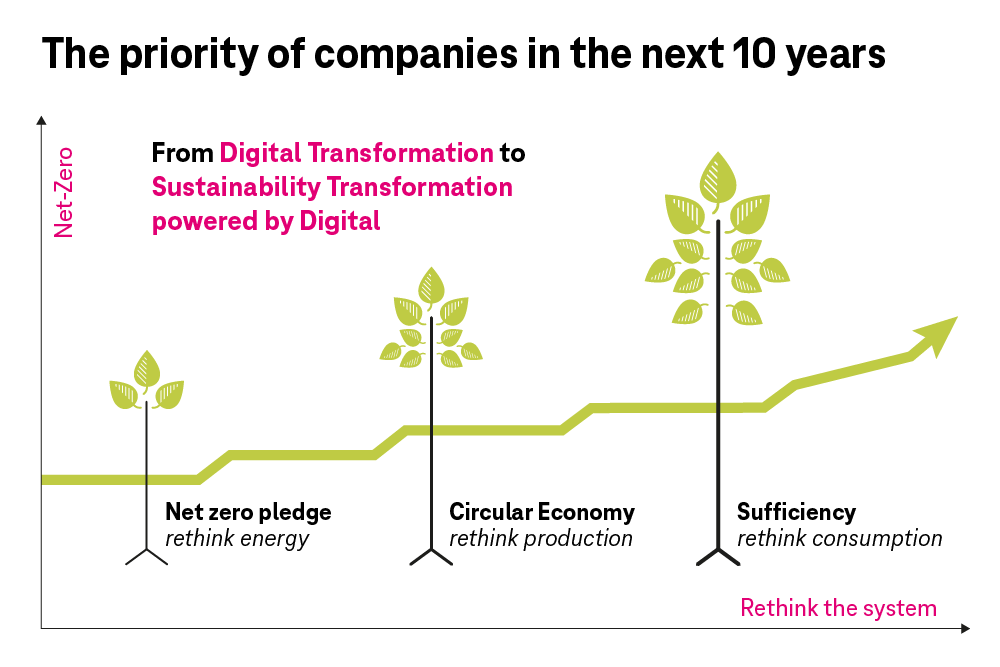
Even when it comes to sustainability, there is no action without consequence – which leads me to my initial question: Are we smart enough to be sustainable? We certainly could be. And I hope this happens sooner rather than later. If everyone takes the following steps to heart, we will have already gained a lot:
"When climate change is running faster than we are, everything must be done to defeat climate change." This quote from UN Secretary-General António Guterres applies now more than ever – and not only for businesses. Sustainability will transform businesses, and digitalization and collaboration will accelerate this pivotal shift to a greener world.
As a designer of the T-Systems Co-Creation Advisory Boards it is precisely this that motivates me to contribute to sustainable business and green initiatives.
If you would like to learn more about the Board or discuss your environmental ideas with me, please don't hesitate to contact me.